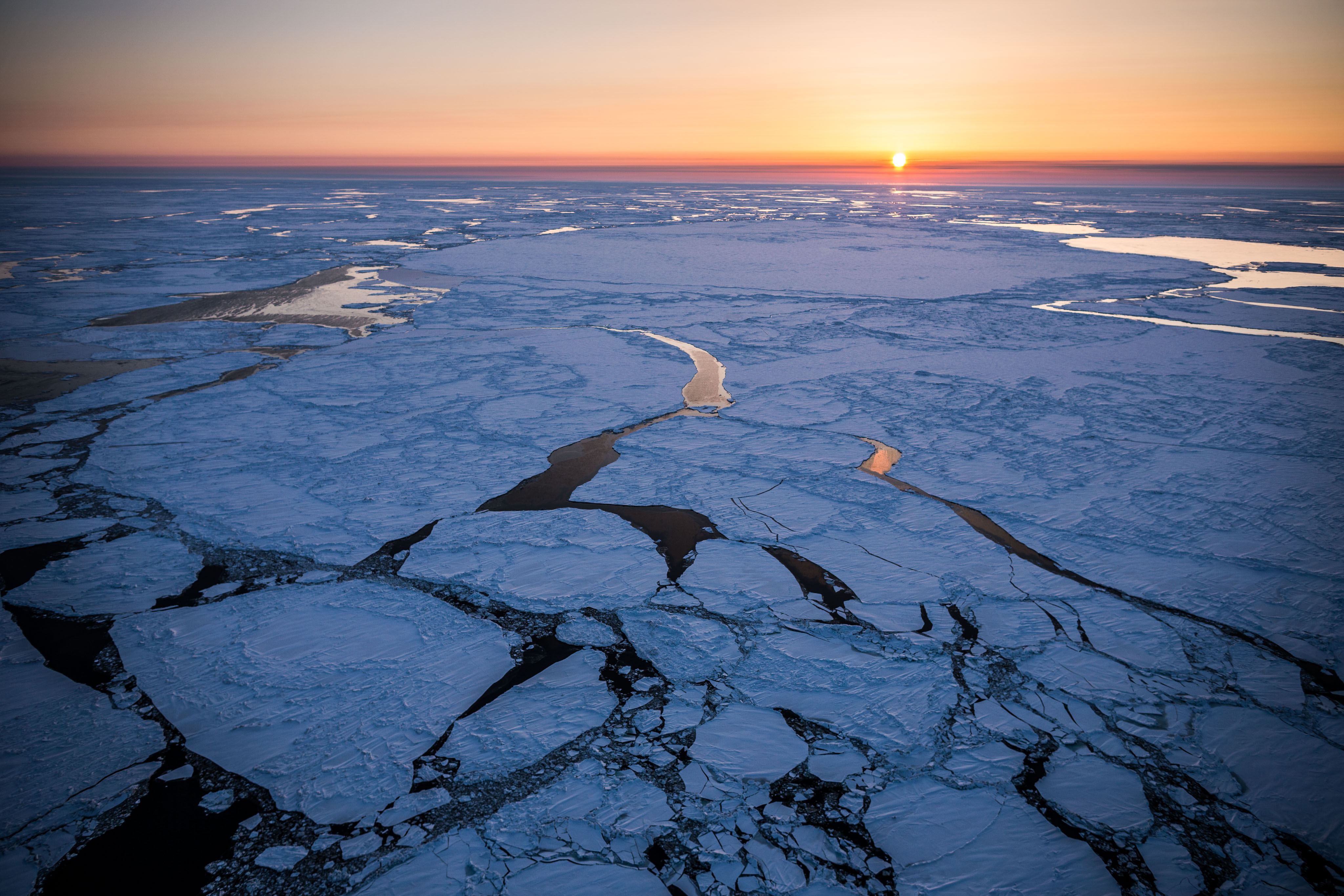Sen. Murkowski is working to restore parts of an Obama executive order on the Bering Sea that Trump overturned

When President Trump in April signed a series of executive orders that overturned Obama-era environmental protections, one initiative that was eliminated was aimed at helping safeguard the northern Bering Sea from climate-change impacts.
For standing approvingly in the White House by Trump as he axed the months-old Bering Sea Climate Resilience Area — a designation that was the product of years of work by the region’s leaders — Alaska Sen. Lisa Murkowski was harshly criticized by the people who had invested time and effort into creating it.
Now Murkowski is promising to use legislation to resurrect a core part of Obama’s Bering Sea executive order — the requirement that policies be vetted by the region’s tribes and that analysis consider traditional indigenous knowledge.
In a speech to the Alaska Federation of Natives annual convention in Anchorage, Murkowski said she met with the Bering Sea Elders Group, the organization behind Obama’s order, and is working with the elders on a bill to that end.“We’ve all seen that executive orders, they can come and they can go,” she said in her Oct. 21 speech to the convention. A better approach, she said, is to ensure that the tribal and indigenous knowledge roles are “anchored in law.”
Specifically, she said in a brief interview before her speech, she is looking at an update of the Arctic Research and Policy Act of 1984, sponsored by her father, then-Sen. Frank Murkowski. Under the act — and subsequent us — the Bering Sea is treated as part of the US arctic, even though it lies south of the Arctic Circle.
A draft version of the bill could be ready in a few weeks, Murkowski said.She wants the legislation to apply to the whole U.S. Arctic, not just the Bering Sea, she said.
The key provision in the short-lived Obama executive order calls for a Bering Sea Task Force to be established within six months. That task force would create a lasting Bering Intergovernmental Tribal Advisory Council to guide activities, regulations and policies in the region.
Murkowski said her legislation is picking up on that theme. “We want to try and lay out the details of what an indigenous task force would look like,” she said.
The goal is to ensure formally that there is more than a cursory consultation requirement, she said. Instead, indigenous interests and knowledge should be integrated into decisions about policies, she said. “How do we give voice to our indigenous peoples?” she said.
Murkowski said she still has doubts about the Obama order in its entirety.“What is a climate resilience plan?” she said. “For many, it was as if the executive order came out of nowhere.”
But at the time it was issued by Obama last December, Bering Sea Elders Group praised the executive order. In a statement then, the organization said Obama’s order “respects the peoples of our region and our dependence on the Bering Sea.”
Legislation restoring part of the climate resilience area is not sufficient, some tribal groups now say.
The National Congress of American Indians, in its annual convention last week in Wisconsin, passed a resolution urging the federal government to restore the entire Northern Bering Sea Climate Resilience Area.
The NCAI resolution follows similar ones issued by the Association of Village Council Presidents, which represents tribes in the Yukon-Kuskokwim region of southwestern Alaska, and Kawarek Inc., a nonprofit that serves Alaska’s Bering Strait region.
The overturned Obama executive order covered more than the plan for a tribal advisory group.One provision was aimed at beefing up safety of marine traffic that is on the rise in the Bering Sea as sea ice retreats. The order instructed the U.S. Coast Guard to consider communities’ recommendations for sensitive areas that vessels should avoid and to include that factor in its ongoing Bering Strait Port Access study in a report by 2018 to the International Maritime Organization.
Another provision in the overturned Obama executive order closed off 40,300 acres in the northern Bering Sea to consideration for oil and gas leasing.
There has not been a northern Bering Sea oil and gas lease sale since 1984, when the U.S. Minerals Management Service auctioned off 927,989 acres in the Navarin Basin. Most leases were relinquished within four years, and no production ever resulted.
A 1988 lease sale in the southern Bering Sea, in the North Aleutian Basin, was unpopular with Alaskans because of potential impacts to Bristol Bay and its rich salmon runs. The federal government in 1992 struck a deal to buy back leases sold in 1988. The North Aleutian Basin/Bristol Bay region was formally closed in 2010 to any leasing through 2017, and in 2014, President Obama withdrew the region from the leasing program entirely.
Note: This story was updated with clarifying details about the status of leasing in the North Aleutian Basin/Bristol Bay region. The original version mentioned the 2010 closure of the North Aleutian Basin to leasing, but omitted the 2014 follow-up, which withdrew that region from the federal offshore oil leasing program.